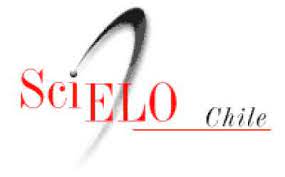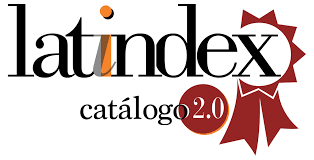Análisis de la eficiencia de un amortiguador combinado sintonizado con incertidumbre en los parámetros sometido a excitaciones sísmicas de bajo contenido de frecuencias
DOI:
https://doi.org/10.4067/S0718-28132020000200068Palabras clave:
ACS, ACLS, AMS, Análisis estocástico, Incertidumbre en los parámetros, Bajo contenido de frecuenciasResumen
Este estudio analiza la eficiencia en la reducción del desplazamiento lateral de una estructura bajo excitaciones sísmicas estocásticas de bajo contenido de frecuencias. El dispositivo de estudio es el Amortiguador Combinado Sintonizado (ACS). El objetivo es analizar cómo cambia su eficiencia, cuando se introduce incertidumbre en sus parámetros de diseño. El ACS está compuesto por dos dispositivos efecto-masa, un amortiguador de masa sintonizado (AMS) y un amortiguador de columna de líquido sintonizado (ACLS). Para trabajar con la componente no lineal de la ecuación del ACLS en el análisis estocástico, se utilizó la técnica de linealización estadística equivalente. Se considera una incertidumbre de ±5 y ±10%. Los parámetros a los que se les introdujo incertidumbre, fueron la razón de longitud del ACLS y la razón de masa. Como criterio de optimización, se consideró la reducción de la desviación estándar del desplazamiento del sistema principal. Los resultados muestran que la eficiencia del ACS es máxima, cuando el periodo de la estructura, coincide con el periodo predominante de la excitación sísmica. Por otra parte, existen leves variaciones en la eficiencia del ACS, cuando se introduce una incertidumbre de hasta un 10% en la razón de masa o razón de longitud del ACLS.
Referencias
Bigdeli, Y. and Kim, D. (2015). Damping effects of the passive control devices on structural vibration control: TMD, TLC and TLCD for varying total masses. KSCE Journal of Civil Engineering 20(1), 301–308.
Chen, B.F. and Yang, B.H. (2018). Experimental study of a hybrid TMD and TLD on structure motion reduction. Ocean Engineering 165, 538–549.
Clough, R.W. and Penzien, J. (1975). Dynamics of structures. McGraw-Hill, USA.
Debbarma, R., Chakraborty, S. and Ghosh, S. (2010). Unconditional reliability-based design of tuned liquid column dampers under stochastic earthquake load considering system parameters uncertainties. Journal of Earthquake Engineering 14(7), 970-988.
Di Matteo, A., Lo Iacono, F.L., Navarra, G. and Pirrotta, A. (2015). Innovative modeling of tuned liquid column damper motion. Communications in Nonlinear Science and Numerical Simulation 23(1-3), 229-244.
Di Matteo, A., Pirrotta, A. and Tumminelli, S. (2017). Combining TMD and TLCD: analytical and experimental studies. Journal of Wind Engineering and Industrial Aerodynamics 167, 101-113.
Espinoza, G., Sagredo, G. y Suazo, A. (2020). Análisis de la eficiencia de un amortiguador combinado sintonizado con incertidumbre en los parámetros sometido a una excitación sísmica de alto contenido de frecuencias. Obras y Proyectos 28, 58-67.
Espinoza, G., Carrillo C. and Suazo, A. (2018a). Analysis of a tuned liquid column damper in non-linear structures subjected to seismic excitations. Latin American Journal of Solids and Structures 15(7), e91.
Espinoza, G., Benedetti, F., Alvarez-Mendoza, P. and Bonilla, E. (2018b). Influence of the seismic excitation frequencies content on the behavior of a tuned mass damper in low-rise building considering soil-structure interaction. Latin American Journal of Solids and Structures 15(8), e75.
Lyapunov, A.M. (1992). The general problem of the stability of motion. Taylor & Francis, UK.
Saitua, F., Lopez-Garcia, D. and Taflanidis, A.A. (2018). Optimization of height-wise damper distributions considering practical design issues. Engineering Structures 173, 768-786.
Sakai, F. (1989). Tuned liquid column damper-new type device for suppression of building vibration. First International Conference on High-Rise Buildings, Nanjing, China, 926-931.
Schmelzer, B., Oberguggenberger, M. and Adam, C. (2010). Efficiency of tuned mass dampers with uncertain parameters on the performance of structures under stochastic excitation. Proceedings of the Institution of Mechanical Engineers, Part O: Journal of Risk and Reliability 224(4), 297–308.
Shum, K.M. (2009). Closed form optimal solution of a tuned liquid column damper for suppressing harmonic vibration of structures. Engineering Structures 31(1), 84-92.
Tributsch, A. and Adam, C. (2012). Evaluation and analytical approximation of Tuned Mass Damper performance in an earthquake environment. Smart Structures and Systems 10(2), 155–179.
Wang, L., Zhao, X. and Zheng, Y.M. (2016). A combined tuned damper and an optimal design method for wind-induced vibration control for super tall buildings. The Structural Design of Tall and Special Buildings 25(10), 468-502.
Descargas
Publicado
Número
Sección
Licencia

Esta obra está bajo una licencia internacional Creative Commons Atribución-NoComercial 4.0.








